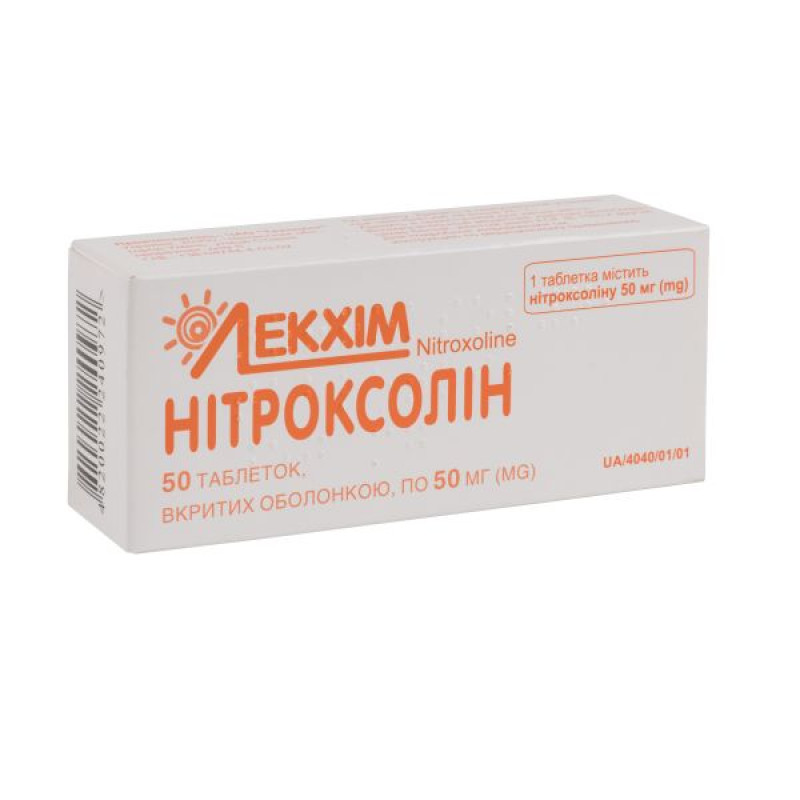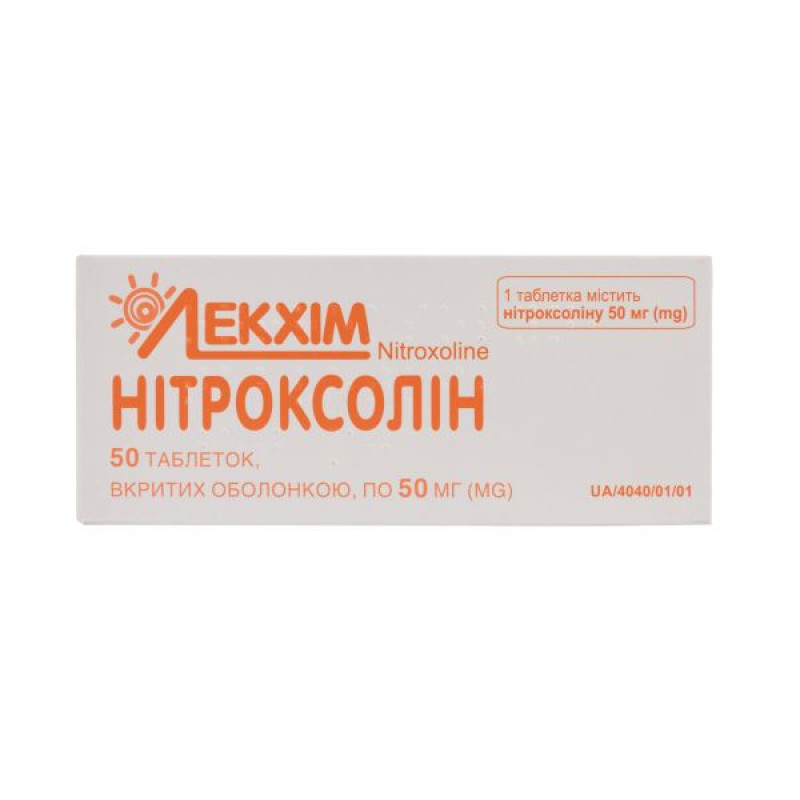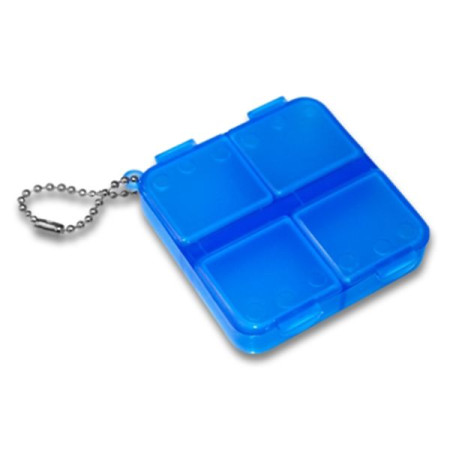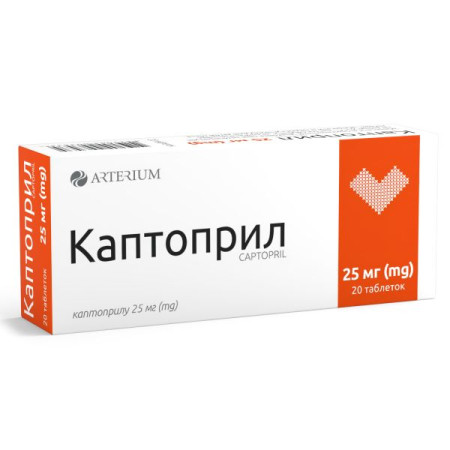Nitroxoline film-coated tablets 50 mg blister No. 50

Instructions Nitroxoline film-coated tablets 50 mg blister No. 50
Composition
active ingredient: 1 tablet contains nitroxoline 50 mg;
excipients: lactose monohydrate, potato starch, talc, magnesium stearate, colloidal anhydrous silicon dioxide, white sugar, povidone 25, titanium dioxide (E 171), gelatin, heavy magnesium carbonate, polyethylene glycol 6000 (macrogol 6000), sunset yellow FCF (E 110).
Dosage form
Film-coated tablets.
Main physicochemical properties: round, film-coated tablets, yellow-orange to orange in color, with convex upper and lower surfaces.
When viewed under a magnifying glass, the fracture shows a core surrounded by two solid layers.
Pharmacotherapeutic group
Antibacterial agents for systemic use. Other antibacterial agents. Nitroxoline.
ATX code J01X X07.
Pharmacological properties
Pharmacodynamics
Nitroxoline is a synthetic uroantiseptic that acts by the chelation mechanism. It blocks enzyme function by binding metal ions in the enzymes of microorganisms, thus preventing the binding of these enzymes to a specific substrate. This leads to a bacteriostatic, bactericidal and fungicidal effect. At subinhibitory concentrations in urine, nitroxoline, both in its original state and in the glucuronide form, inhibits the fixation of the uropathogenic bacterium Escherichia coli in the epithelium of the urogenital tract.
Nitroxoline is effective against a wide range of gram-positive and gram-negative bacteria and fungi. The spectrum of its antibacterial and antifungal activity extends to most microorganisms that infect the urinary tract.
Microorganisms sensitive to nitroxoline include Escherichia coli, Ureaplasma urealyticum, Mycoplasma hominis, Candida spp., Torulopsis spp.
Microorganisms partially sensitive to nitroxoline include Proteus spp., Staphylococcus spp.
Microorganisms insensitive to nitroxoline include Pseudomonas spp., Providencia spp., Klebsiella spp., Enterobacter spp., Serratia spp., and anaerobic bacteria.
Sensitivity to nitroxoline has also been established for streptococci, Corynebacterium diphteriae, Enterococcus spp., Salmonella spp., Shigella spp., Neisseria gonorrhoeae and Hemophillus influenzae.
Pharmacokinetics
Nitroxoline is rapidly and almost completely (90%) absorbed from the gastrointestinal tract after oral administration. The average peak plasma concentration after a single oral dose of 200 mg is reached after 1.5-2 hours and is 4-4.7 mg/l. The serum half-life is approximately 2 hours. After oral administration of nitroxoline, high concentrations of both conjugated and unconjugated nitroxoline are achieved in the urine. Nitroxoline is metabolized in the liver, where it is conjugated with glucuronic and sulfuric acids. Nitroxoline is excreted as a glucuronide, mainly in the urine (55-60%) and to a lesser extent in the bile. Only 5% is excreted in the urine in the unconjugated active form.
Indication
Acute, chronic and recurrent urinary tract infections caused by gram-positive and gram-negative microorganisms and fungi sensitive to nitroxoline.
Prevention of recurrent urinary tract infections.
Contraindication
Hypersensitivity to nitroxoline or any component of the drug, as well as to quinolines; severe hepatic and renal failure (creatinine clearance less than 0.33 ml/s).
Interaction with other medicinal products and other types of interactions
Nitroxoline should not be used together with drugs containing hydroxyquinolines or their derivatives.
When used simultaneously with antacids containing magnesium, the absorption of Nitroxoline is slowed down.
Nitroxoline reduces the effectiveness of nalidixic acid.
When used together with tetracycline drugs, the effects of each drug are additive.
When used with nystatin and levorin, potentiation of the action is noted.
Nitroxoline should not be combined with nitrofurans to avoid summation of the negative neurotropic effect.
Application features
The drug should be administered with caution to patients with impaired renal function due to the possibility of nitroxoline cumulation. The drug should be administered with caution to patients with cataracts. With repeated and prolonged treatment with high doses of halogenated hydroxyquinoline derivatives, cases of peripheral neuritis and optic neuritis have been described. Nitroxoline is a quinoline nitro derivative and such side effects have not been observed for it, however, caution is recommended when treating with nitroxoline - such patients should be under close medical supervision. Treatment should not exceed 4 weeks without additional medical examination.
The drug contains lactose, therefore patients with rare hereditary forms of galactose intolerance, lactase deficiency or glucose-galactose malabsorption syndrome should not use the drug.
Use during pregnancy or breastfeeding
The safety and efficacy of the drug during pregnancy or breastfeeding have not been established, therefore nitroxoline should not be prescribed during these periods.
Ability to influence reaction speed when driving vehicles or other mechanisms
There is no data on the negative impact of the drug on the reaction speed when driving or working with other mechanisms.
Method of administration and doses
Adults: the recommended daily dose is 400-800 mg, divided into 4 doses. The average daily dose is 400 mg (2 tablets 4 times a day before meals). In severe diseases, the daily dose can be increased to 800 mg (4 tablets 4 times a day). The maximum daily dose for adults is 800 mg.
Children aged 3 years and over: the recommended daily dose is 200-400 mg (1-2 tablets).
4 times a day before meals).
The duration of treatment is determined by the doctor depending on the nature and course of the disease. In chronic infections, the drug is prescribed in repeated courses lasting 2 weeks with a two-week break (the course of treatment may last several months).
Kidney dysfunction.
In patients with moderate renal insufficiency (creatinine clearance greater than 0.33 ml/s), the usual dose should be halved.
Liver dysfunction.
In case of impaired liver function, the usual dose should be halved.
Elderly patients.
No dose adjustment is required.
Children
Children under 3 years of age are not recommended to use the drug in the form of film-coated tablets.
Overdose
There is no information on overdose with nitroxoline. Treatment is symptomatic.
Adverse reactions
On the part of the gastrointestinal tract: in rare cases, dyspeptic phenomena (nausea, vomiting, loss of appetite) are possible, which can be prevented by taking the drug during meals.
From the liver and biliary tract: decreased transaminase activity, impaired liver function.
On the part of the immune system: possible skin rashes, itching, which quickly disappear after discontinuation of the drug; very rarely - allergic reactions with the development of thrombocytopenia.
From the nervous system: rarely - headache, ataxia, paresthesia, polyneuropathy.
Renal: decreased uric acid content in blood plasma.
Since nitroxoline is excreted by the kidneys, the urine turns an intense yellow color.
Others: general weakness, tachycardia.
The drug contains the dye sunset yellow FCF (E 110), which may provoke allergic reactions, including asthma. This is especially true for patients with hypersensitivity to acetylsalicylic acid.
Expiration date
4 years.
Storage conditions
Store in original packaging at a temperature not exceeding 25 ° C. Keep out of the reach of children.
Packaging
10 tablets in a blister; 1 or 5 blisters in a cardboard pack.
10 tablets in a blister; 80 blisters in a cardboard box.
Vacation category
According to the recipe.
Producer
Technolog PJSC.
Location of the manufacturer and its business address
Ukraine, 20300, Cherkasy region, Uman city, Manuilskogo street, building 8.
There are no reviews for this product.
There are no reviews for this product, be the first to leave your review.
No questions about this product, be the first and ask your question.
















